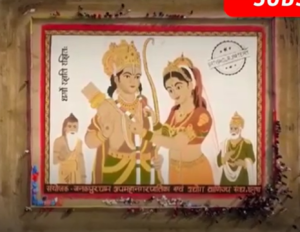A group of artists in Janakpur, Nepal, have created a stunning portrait of Ram and Sita, the divine couple of Hindu mythology, using different types of grains. The portrait covers an area of 11,000 square feet and is an attempt to set a new world record for the largest grain artwork.

What is the inspiration behind the portrait?
The portrait is inspired by the ancient and sacred relationship between Janakpur and Ayodhya, the birthplaces of Sita and Ram respectively. According to the epic Ramayana, Sita and Ram got married in Janakpur in a grand ceremony known as Vivah Panchami. Every year, thousands of pilgrims and tourists visit Janakpur to celebrate this auspicious occasion and pay homage to the Janaki Mandir, the temple dedicated to Sita.
The artists decided to make the portrait as a tribute to the cultural and religious heritage of Janakpur and to promote it as a tourist destination. They also wanted to showcase the diversity and richness of Nepali grains and agriculture.
How was the portrait made?
The portrait was made by using 102 quintals of 11 different kinds of grains, such as rice, wheat, soybeans, chickpeas, lentils, maize, millet, sesame, mustard, and sunflower seeds. The grains were arranged on a carpet-covered flat surface, over a layer of soil, to form the outline and the details of the faces of Ram and Sita. The portrait also features the symbols of the sun and the moon, representing the solar and lunar dynasties of the two deities.
The portrait was designed and supervised by Satish Gurjar, an artist from India, who had previously made a similar portrait of Ram and Sita in Ayodhya, covering an area of 9,000 square feet. He was assisted by a team of local artists and volunteers, who worked for three days to complete the project.
What is the significance of the portrait?
The portrait is a remarkable example of artistic creativity and innovation, as well as a symbol of harmony and unity. It reflects the shared history and faith of the people of Nepal and India, who revere Ram and Sita as their ideal role models. It also demonstrates the potential of Janakpur as a hub of cultural and spiritual tourism, as well as a center of grain production and trade.
The portrait is expected to be registered in the Guinness Book of World Records as the largest grain artwork in the world, surpassing the previous record held by the Ayodhya portrait. The portrait will be displayed for public viewing until the end of the Vivah Panchami festival, after which the grains will be distributed to the local farmers and animal shelters.

